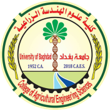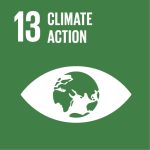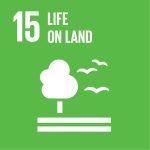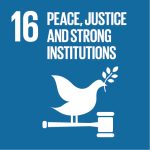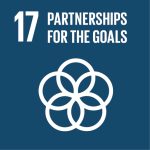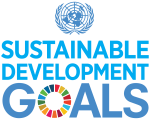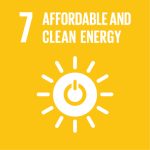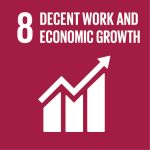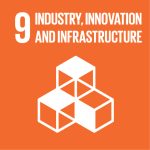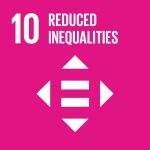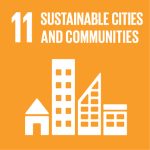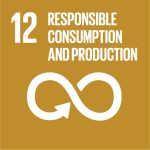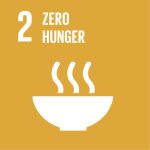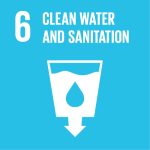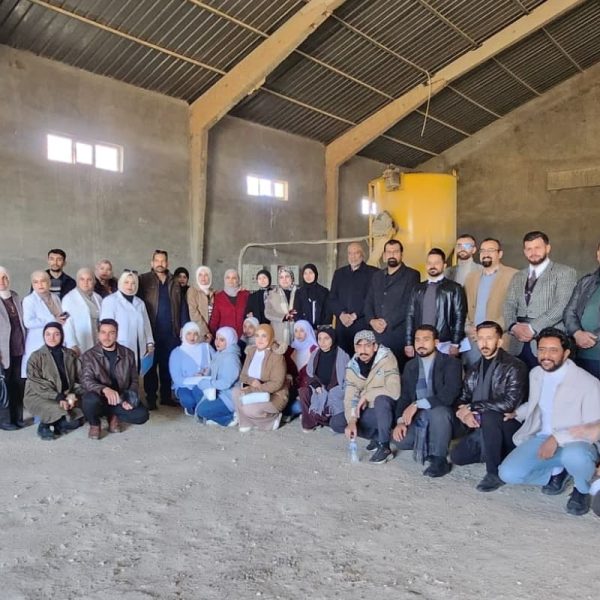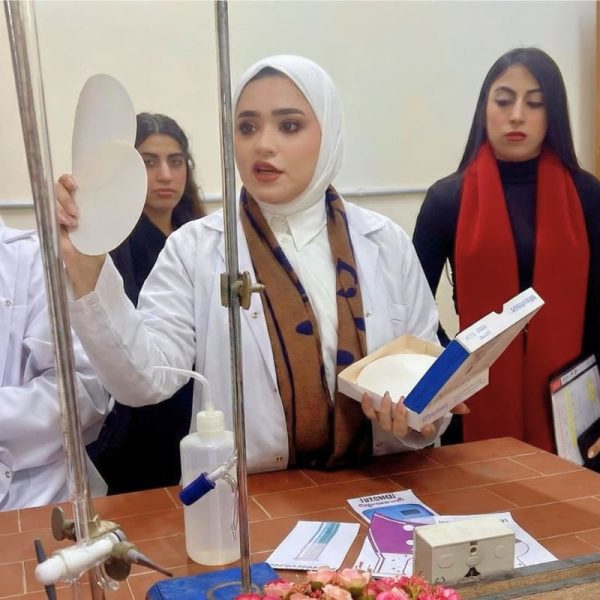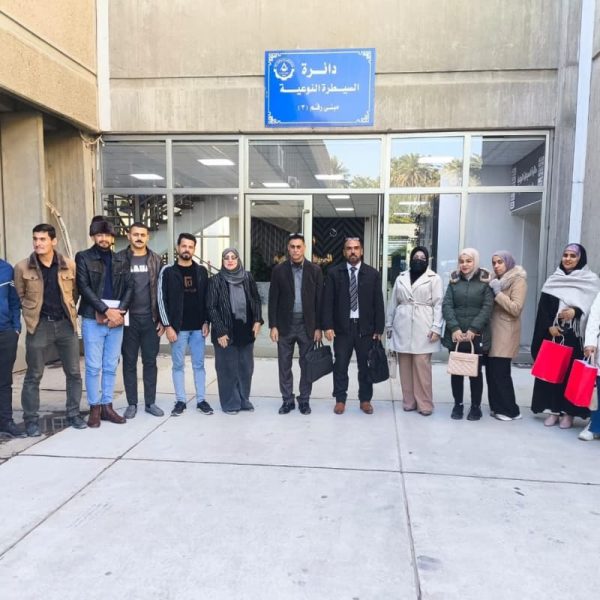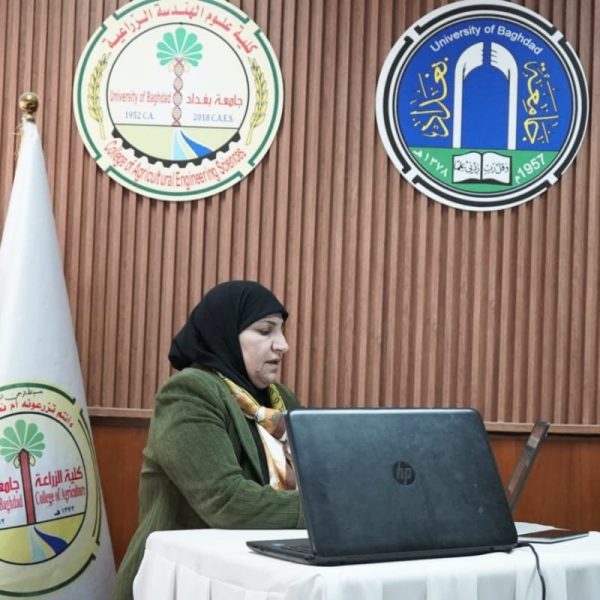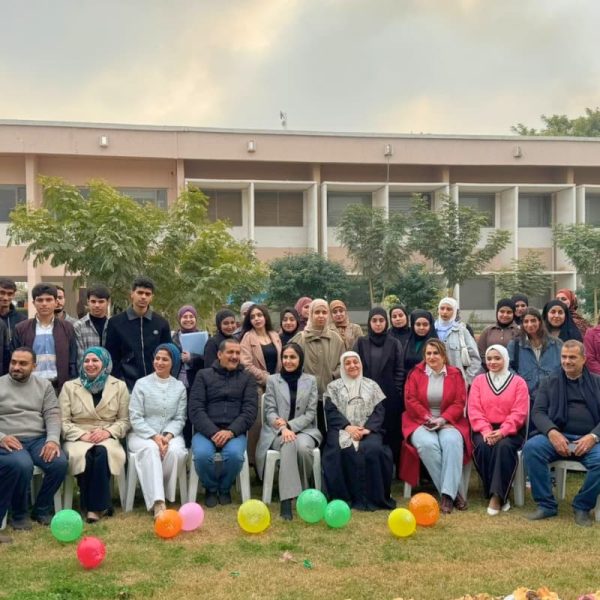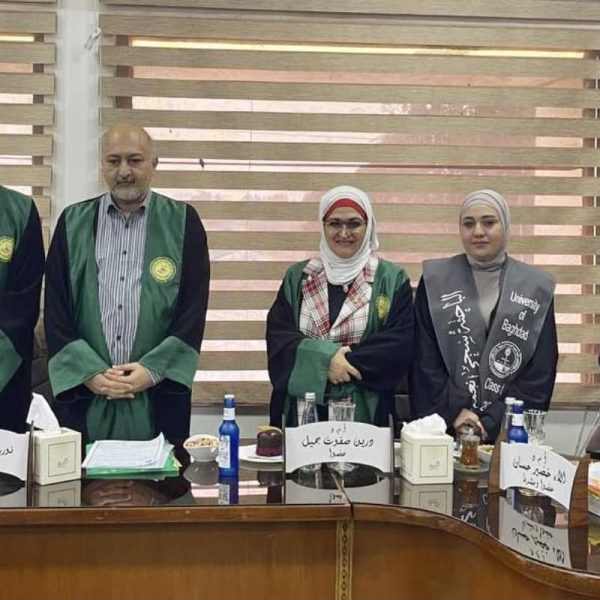College of Agricultural Engineering, Environment and Sustainability
This project aims at the possibility of cultivating and producing horticultural crops under the hydroponic system NFT axis and rationalizing water and fertilizer consumption by reusing the solutions resulting from hydroponics in irrigating cultivated fields and increasing production / m-3 of the nutrient solution
Reducing the use of fresh water, which costs the consumer an amount of money, which must be paid in exchange for providing him with water and providing a new water source at a low price.
Reducing the cost of the water production unit. Many consumers of water depended on drilling wells, which cost a lot of money.
Reducing the expenses of getting rid of gray water polluting the environment, as many small population centers do not have public sewage networks, which makes the people compensate for this by making cesspits, which often have many negatives, especially as they need to be constantly emptied, This is considered expensive to some extent due to the high cost of emptying, and therefore most families leave these pits to fill up and become a health problem for everyone from smells, insects and diseases. As for large cities, there are public sewage networks, but they also suffer from many problems due to the age of these networks that It needs to be checked and maintained periodically. From here, we find that the wastewater has to be disposed of.
The use of appropriate treated wastewater helps to dispense with some fertilizers that cost a lot of money, as they contain organic materials and some nutrients needed for crops.
Introduction
Globally, the number of people living in extreme poverty fell from 36 per cent in 1990 to 10 per cent in 2015. But the pace of change is slowing, and the COVID-19 crisis risks reversing decades of progress in the fight against poverty. New research published by the United Nations University’s Global Institute for Development Economics Research warns of the economic fallout from the global pandemic that could increase global poverty by up to half a billion people or 8% of the total population. source
Our College
It plays an important role in achieving the first goal of the Sustainable Development Goals, which is to eradicate poverty through:
1-Education and training: Providing the necessary education and training to develop individuals’ agricultural skills and knowledge, providing them with better opportunities to work in the agricultural sector, thus improving income and reducing poverty.
2- Scientific research: Conducting scientific research that helps develop new agricultural technologies and methods that increase productivity and reduce agricultural costs, which contributes to increasing farmers’ income and improving their livelihoods.
3- Enhancing food security: Increasing agricultural production through sustainable agricultural practices contributes to achieving food security, which is a key factor in reducing poverty, as food shortages lead to poverty and hunger.
Introduction
Our College
1- Enhancing food security through research on increasing crop productivity and improving farming and irrigation techniques, which helps meet the needs of the growing population.
2- Cooperation with agricultural departments and companies and providing scientific solutions that contribute to achieving food security.
Introduction
Ensuring healthy lives and promoting decent living at all ages is key to achieving sustainable development.
The world is currently facing an unprecedented global health crisis – due to COVID-19 human suffering is rampant, the global economy is being destabilized and the lives of billions of people around the world are turned upside down source
Our College
1- Studying and developing food crops rich in essential nutrients contributes to improving individuals’ health. It also examines the impact of agricultural methods on public health.
2- Improving nutrition through the Department of Food Sciences research, which specializes in improving human nutrition.
Introduction
Education enables upward social and economic mobility and is an important means of escaping poverty. Over the past decade, significant progress has been made towards facilitating access to education and enrolment rates at all levels, especially for girls. However, some 260 million children were still out of school in 2018 – – making up nearly a fifth of the world’s population in this age group. In addition, more than half of the world’s children and adolescents do not meet minimum standards of proficiency in reading and math.source
Our College
The Faculty of Agricultural Engineering Sciences contributes to the dissemination of agricultural knowledge and the provision of educational programs to qualify specialists and farmers on sustainable agricultural methods and the use of agricultural development curricula such as smart agriculture and sustainable intensification of crop production, as well as qualifying many graduates to work with farmers and develop agricultural work, and this is what the FAO confirmed as farmers as natural leaders through whom food security is achieved.
Introduction
Gender equality is not just a fundamental human right, but a necessary foundation for a peaceful, prosperous and sustainable world. There has been progress over the past decades: more girls are going to school, fewer girls are forced into early marriage, more women are serving in parliament and in leadership positions, and laws are being reformed to promote gender equality.source
Our College
The Faculty of Agricultural Engineering Sciences supports women’s empowerment in the agricultural sector and provides educational and training opportunities for women, helping to enhance their participation in rural development.
Introduction
While significant progress has been made in increasing access to clean drinking water and sanitation, billions of people – mostly in rural areas – still lack access to these basic services. Globally, one in three people do not have access to safe drinking water, two in five people do not have any basic facilities for washing hands with soap and water, and more than 673 million people practice open defecation.source
Our College
Agricultural research in scientific departments focuses on the efficient use of water resources, sustainable irrigation techniques, and the development of water management solutions in the agricultural sector, especially in light of water scarcity and deteriorating quality.
Introduction
The world is making progress towards Goal 7, with encouraging signs that energy is becoming more sustainable and widely available. Access to electricity has begun to accelerate in poor countries, energy efficiency continues to improve, and renewable energy is making impressive gains in the electricity sector. source
Our College
The College contributes to achieving this goal through several key roles, including:
- Research and development in the field of bioenergy: The college departments are working on developing techniques and methods to produce bioenergy from agricultural waste, such as biofuels from crop residues or plants that can be grown specifically for this purpose. This contributes to reducing dependence on petroleum fuels and providing renewable energy sources.
- Recycling agricultural waste: The college conducts research on converting agricultural waste into energy sources, which achieves two benefits: disposing of waste in environmentally friendly ways, and providing clean and sustainable energy that can be used in rural areas and farms.
- Educating students and farmers about renewable energy: Providing training and awareness programs for students on the importance of renewable energy and its use in the agricultural sector, such as using solar energy to operate irrigation systems or generate electricity on farms.
- Design of agricultural systems powered by renewable energy: The Department of Agricultural Machinery and Machinery is developing modern agricultural systems based on renewable energy, such as solar irrigation systems or greenhouses that rely on clean energy. These systems reduce the cost of agricultural production and contribute to their sustainability.
- Crop development for bioenergy: Colleges of Agriculture contribute to research on the development of crops dedicated to the production of bioenergy, such as corn, cane and soybeans, that can be used in the production of biofuels, thus contributing to the diversification of sustainable energy sources.
Introduction
Sustainable and inclusive economic growth can drive progress, create decent jobs for all and improve living standards. COVID-19 has disrupted billions of people and put the global economy at risk. The IMF predicts a bad global recession like the 2009 recession or worse. As job losses increase, the ILO estimates that nearly half of the global workforce is at risk of losing their livelihoods. source
Our College
The Faculty of Agricultural Engineering Sciences contributes to:
- Creating new job opportunities, especially in rural areas, by supporting agricultural projects and developing entrepreneurial skills.
Focusing on research on sustainably increasing agricultural productivity and diversifying sources of income for farmers, which means increasing the agricultural sector’s contribution to the GDP.
Introduction
Inclusive and sustainable orientation towards industrialization, combined with innovation and infrastructure, can unleash dynamic and competitive economic forces that generate jobs and income, while playing a key role in introducing and promoting new technologies, facilitating international trade, and enabling the efficient use of resources. source
Our College
Build resilient infrastructure, spur sustainable industrialization and encourage innovation
The college plays an important role in achieving this goal through the development of sustainable agriculture and agricultural infrastructure, through several main axes, including:
- Research and innovation in agricultural technologies: The college contributes to the development of new technologies that enhance the efficiency of agricultural production, such as smart irrigation systems, precision agricultural technology, and modern agricultural machinery. These technologies improve productivity and reduce resource waste.
- Developing sustainable agricultural infrastructure: Scientific departments are working on designing and developing infrastructure solutions suitable for rural areas, such as transportation and storage systems that help transport crops safely and quickly and reduce crop losses, enhancing the sustainability of the agricultural sector.
- Encouraging agricultural industrialization: The college encourages the development of agricultural industries and food processing, which helps to transform agricultural products into value-added commodities, provides job opportunities and contributes to the development of the local economy in agricultural areas.
- 4. Cooperation with agro-industries: The college collaborates with agricultural companies and institutions to conduct joint research, to develop more efficient and sustainable agricultural equipment and tools, such as equipment that reduces energy or water consumption.
- Stimulate agricultural innovation by conducting research and developing innovative solutions, such as drought-resistant crop varieties or growing in non-traditional environments.
Promotion of environmentally friendly technologies: The college’s research focuses on developing and using environmentally friendly technologies that preserve soil and reduce pollution, thus contributing to building a sustainable agricultural infrastructure that preserves natural resources for future generations.
Introduction
Inequality within and between States is a constant cause for concern. Despite some positive signs of a trend towards reducing inequality in some dimensions, such as reducing relative income inequality in some countries and benefiting low-income countries through preferential trade, inequality persists. source
Introduction
The world is increasingly urbanized. Since 2007, more than half of the world’s population has lived in cities, and this proportion is expected to rise to 60 percent by 2030. Cities and urban areas are strengths of economic growth – contributing about 60 percent of global GDP. But they are also responsible for about 70 percent of global carbon emissions and more than 60 percent of resource use. source
Our College
Making human cities and communities inclusive, safe, resilient and sustainable
- Promotion of urban agriculture: The faculty contributes to spreading the culture of urban agriculture through research and training on rooftop cultivation techniques, balconies and urban gardens and encouraging afforestation. This type of agriculture helps cities improve food security and reduce dependence on remote transportation of food.
- Research into sustainable agriculture techniques within cities: The college develops agricultural techniques suitable for urban spaces, such as vertical farming and hydroponics, that reduce land and water use, contributing to achieving self-sufficiency in cities and contributing to the sustainability of urban communities.
3. Environmental awareness for communities: The college organizes awareness campaigns and programs for communities on the importance of urban agriculture and reducing agricultural waste, and promotes the concept of environmental responsibility within cities.
Introduction
Our College
Ensure sustainable consumption and production patterns:
- Reducing food waste: The college conducts research on food preservation and storage techniques to reduce food waste, and provides agricultural solutions that reduce agricultural production losses during the harvesting and distribution process.
- Encouraging sustainable agricultural practices: The college offers integrated curricula on sustainable farming methods, such as organic farming and soil-conservation farming techniques, which reduce the environmental impact of agricultural activities and ensure sustainable food production.
Recycling and managing agricultural waste: Scientific departments are working to recycle and turn agricultural waste into useful products, such as converting crop residues into organic fertilizer, which reduces pollution and enhances sustainability in agricultural production.
Introduction
Our College
Contribute to adaptation to climate change through research on agricultural techniques that are resistant to climate change and promote sustainable agriculture that reduces carbon emissions and mitigates the effects of climate change.
Introduction
Our College
- Research in sustainable agriculture techniques: The scientific departments of the college conduct research on farming techniques that reduce the use of chemical fertilizers and pesticides, which can seep into the water and pollute it. Promoting these techniques can reduce chemical pollution that negatively affects ecosystems.
- Reducing the flow of chemicals: The college is working on developing agricultural methods and techniques to reduce the flow of agricultural water loaded with chemicals and nitrogen to rivers, such as conservation agriculture that preserves the soil and prevents erosion, which reduces the access of harmful substances to the water.
- Promoting organic agriculture: The college encourages organic agriculture as an alternative to traditional agriculture that relies on fertilizers and chemical pesticides. This reduces the risk of water pollution from the leakage of these materials and contributes to the protection of marine resources.
- Recycling of agricultural waste: The college’s research focuses on ways to recycle agricultural waste or convert it into organic fertilizer, which reduces the amount of agricultural waste that can reach fresh or marine water and lead to pollution.
Promoting sustainable aquaculture: The college offers study programs and research on sustainable hydroponics and fish farming in controlled environments, which contribute to reducing pressure on natural marine resources and offer a sustainable alternative to fishing.
Introduction
Our College
It contributes to protecting biodiversity and improving sustainable land use practices by developing agricultural methods that conserve soil and ecosystems, such as hydroponics, organic farming, and no-till farming.
Introduction
Our College
- Contribute to achieving food security: Sustainable agriculture is an important factor in achieving food security, which in turn reduces conflicts and promotes social stability. Through its educational and research programs, sustainable agriculture contributes to the development of techniques and methods to increase food production and equitable distribution.
- Promoting social justice in rural areas: Contributes to supporting farmers, especially marginalized groups and small farmers, through training programs and workshops, which promotes social and economic justice in rural communities and contributes to poverty reduction.
- Awareness of environmental rights: The college promotes awareness of the importance of protecting the environment and preserving natural resources. This awareness is part of building peaceful societies that respect the rights of individuals in a clean and sustainable environment.
Leadership capacity building and partnerships: The college departments train students in critical thinking and teamwork, which helps them build effective and fair institutions when they enter the labour market. The college also contributes to building partnerships with governmental and non-governmental institutions, which promotes sustainable governance in the agricultural sector.
Introduction
A successful development agenda requires inclusive partnerships – at the global, regional, national and local levels – based on principles and values, and on a shared vision and shared goals that put people and planet at the centre of their concern. Many countries need official development assistance to encourage growth and trade. However, aid levels were falling and donor States had not fulfilled their pledge to increase financing for development. source
Our College
- Cooperation with other research institutions and universities: The college promotes scientific cooperation with local and international universities, which contributes to developing sustainable agricultural methods and applying new agricultural practices.
- Developing partnerships with the public and private sectors: The college contributes to establishing partnerships with government agencies and private companies to support sustainable agricultural development. This includes supporting small-scale agricultural enterprises, achieving food security, and devising new ways to improve productivity.
Participation in international conferences and workshops: Participating in international conferences and workshops to exchange knowledge and experiences helps transfer successful experiences and apply them in different environments.
